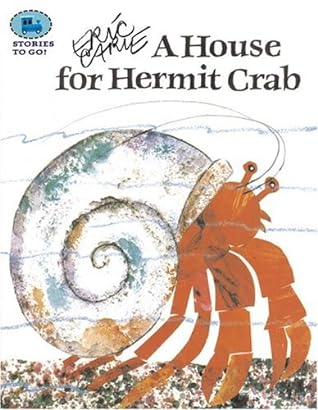Estimated read time: 8 min read
One Sentence Summary
A mysterious stranger brings joy and wonder to a small town before disappearing without a trace.
Table of Contents
Introduction
If you’ve ever stared out a window on a chilly morning, noticing the leaves’ first golden blush or a mysterious frost, you’ll feel right at home with The Stranger by Chris Van Allsburg. Known for his evocative illustrations and quietly magical stories, Van Allsburg invites readers into a world where the ordinary brushes against the uncanny. The Stranger isn’t just a children’s picture book; it’s a nuanced, thought-provoking tale that blends mystery, wonder, and the subtle magic of the changing seasons. Whether you’re a college student searching for meaning in the unfamiliar or a lecturer dissecting motifs of identity and transition, this book provides fertile ground for discussion and delight.
Historical Context
Published in 1986, The Stranger emerged during a golden era of children’s literature, where boundary-pushing picture books redefined how stories could be told. The 1980s saw authors and illustrators experimenting with mood, ambiguity, and emotional complexity—qualities that Van Allsburg masterfully wove into his works, including the now-classic The Polar Express and Jumanji.
Set against the backdrop of rural America, The Stranger draws inspiration from classic American folklore and the natural world’s cycles. Its subtle references to seasonal change and mythic figures—particularly the personification of Jack Frost—ground it in longstanding traditions, while its unique spin on these themes makes it timeless.
Brief Synopsis
Plot Overview
The Stranger opens with a mysterious accident: a farmer, on a late-summer drive, accidentally hits an enigmatic man with his truck. The stranger, dazed but unharmed, has lost his memory. Welcomed into the farmer’s home, he is treated with kindness and curiosity. However, as the days pass, odd things begin to happen—especially around the farm’s weather and the local environment. The stranger’s presence seems to halt the progression of fall, keeping the world in a suspended state of summer. As he slowly regains his identity, the narrative builds toward a gentle revelation that leaves both characters and readers changed.
Setting
The story is set on a small, picturesque farm somewhere in the American countryside. Van Allsburg’s illustrations saturate the pages with the lush greens of summer and the golden hues of approaching autumn. The atmosphere is tinged with both coziness—warm kitchens, home-cooked meals—and a sense of quiet unease, as natural rhythms subtly shift. The rural landscape is both specific and universal, evoking the timelessness of farms, fields, and the cycles of nature.
Main Characters
Let’s break down the main characters in a table for clarity:
| Name | Role | Key Traits | Importance to the Plot |
|---|---|---|---|
| The Stranger | Mysterious amnesiac guest | Gentle, curious, childlike, uncanny | Central mystery; source of magical change |
| Farmer Bailey | Kind-hearted farmer | Practical, compassionate, observant | Caretaker; voice of reason and warmth |
| Mrs. Bailey | Farmer’s wife | Nurturing, attentive, welcoming | Provides comfort and hospitality |
| Katy | Farmer’s daughter | Innocent, inquisitive, empathetic | Represents childlike acceptance |
Plot Summary
The Accident and Arrival
The story begins with Farmer Bailey driving along a country road. Suddenly, a figure darts into the path of his truck. The impact is minor, but the stranger is left with amnesia. Farmer Bailey, embodying rural hospitality, brings the stranger home to recover.
Life on the Farm
The stranger quickly becomes part of the family’s daily life. He helps with chores, eats meals, and engages with the farm’s routines. However, everyone notices his oddities—he doesn’t seem to feel heat or cold, and animals react to him with a mix of curiosity and wariness. The stranger observes everything with a sense of wonder, as if seeing the world for the first time.
The Unchanging Landscape
As September rolls on, the farm remains locked in summer. Leaves that should turn remain stubbornly green. The air stays warm, and the usual signs of autumn are absent. Neighbors begin to gossip about the odd state of the land, but the Baileys remain focused on caring for their unusual guest.
The Stranger’s Awakening
One day, the stranger catches sight of migrating geese and feels a powerful, inexplicable longing. He becomes increasingly restless, drawn to the fields and the shifting sky. Finally, a sudden chill in the air and a chance touch of his breath against a window—leaving intricate frost patterns—trigger the return of his memory.
Departure and Transformation
Realizing his true identity (implied to be Jack Frost or the spirit of autumn), the stranger quietly leaves the farm. Almost overnight, fall bursts forth in full splendor: leaves turn, the air crisps, and the world resumes its natural rhythm. The family, though saddened by his departure, remains touched by his gentle presence, forever changed by the magic he brought.
Themes and Motifs
Central Themes
- Identity and Self-Discovery: The stranger’s journey mirrors the universal search for self-understanding. His amnesia is a metaphor for those moments in life when we feel lost or unmoored.
- Change and Transition: The story’s focus on the changing seasons reflects life’s inevitability of change, and the beauty found in embracing it.
- The Unknown and Unfamiliar: The stranger represents that which is foreign or mysterious. The Baileys’ response—hospitality, curiosity, and kindness—serves as a model for engaging with the unknown.
- Nature’s Cycles: The progression from summer to fall is not just a backdrop; it’s a living force in the narrative, entwined with the stranger’s identity.
Motifs
- Mirrors and Reflections: The stranger’s repeated acts of looking at his own reflection highlight his internal search for identity.
- Frost and Cold: These elements symbolize both the stranger’s otherworldly nature and the world’s need for seasonal change.
Thematic Table
| Theme | Description | Broader Relevance |
|---|---|---|
| Identity | Search for self; memory loss as metaphor | Coming-of-age, existential inquiry |
| Embracing Change | Acceptance of seasonal/life transitions | Adaptability, resilience |
| Hospitality to the Unfamiliar | Welcoming the unknown with kindness | Immigration, diversity, empathy |
| Nature’s Order | Respect for natural cycles | Environmental awareness, interconnectedness |
Literary Techniques and Style
Chris Van Allsburg’s signature style is in full force in The Stranger.
- Illustration as Narrative: The lush, almost photographic illustrations do as much storytelling as the text. Subtle visual cues—a leaf’s color, a breath’s frost—convey mood and advance the plot.
- Economy of Language: The prose is spare but evocative, letting readers fill in gaps with their own imagination. This open-endedness invites multiple interpretations.
- Atmospheric Tone: Van Allsburg crafts a gentle suspense, balancing warmth and unease. The result is a story that feels both comforting and mysterious.
- Symbolism: Everyday objects—windows, leaves, geese—take on layered meanings, symbolizing change, longing, and self-realization.
- Magical Realism: The story’s supernatural elements are treated matter-of-factly, lending them a quiet power.
Author's Background
Chris Van Allsburg, a celebrated American author and illustrator, is renowned for his ability to blend realism with fantasy. Born in 1949, he began his career as a sculptor before turning to picture books. His works—including Jumanji, The Polar Express, and The Mysteries of Harris Burdick—have won multiple Caldecott Medals and inspired generations of readers and filmmakers.
Van Allsburg’s style is marked by rich, detailed illustrations and stories that linger in ambiguity. He often explores themes of wonder, strangeness, and the unexplained, challenging readers of all ages to look beyond the surface. His legacy lies in transforming the picture book into a sophisticated art form, respected by both children and adults.
Key Takeaways
- Embracing the Unknown: Welcoming what we do not understand can enrich our lives and foster growth.
- Change is Inevitable: Resistance to change can stall progress; accepting and participating in life’s cycles brings renewal.
- Identity is Fluid: Even when we feel lost, our true selves can re-emerge through reflection and connection.
- Beauty in Mystery: Not all questions have answers, and sometimes, the unknown can be comforting rather than frightening.
Reader's Takeaway
The Stranger offers readers a gentle yet profound meditation on identity, belonging, and transformation. For college students and lecturers alike, it’s a reminder that life’s greatest lessons often come from unexpected sources. The book’s emotional resonance—its blend of warmth, melancholy, and quiet wonder—lingers long after the final page. Whether you’re facing a new semester, a move, or a personal crossroads, the story encourages you to welcome the unfamiliar, trust the process of change, and find beauty in life’s mysteries.
Conclusion
Chris Van Allsburg’s The Stranger is more than a children’s book—it’s a timeless exploration of human experience, rendered in haunting prose and unforgettable images. Its significance lies not only in its narrative but in its invitation to readers of all ages to see the world anew. If you’re seeking a story that balances academic depth with emotional impact, The Stranger deserves a place on your shelf. Dive in, and let its quiet magic transform your understanding of identity, change, and the marvels that lie just beyond the known.
The Stranger FAQ
What is the genre of 'The Stranger'?
The genre of 'The Stranger' is a children's picture book, known for its mysterious and thought-provoking storytelling.
Who is the author of 'The Stranger'?
The author of 'The Stranger' is Chris Van Allsburg, a renowned writer and illustrator of children's books.
What is the main theme of 'The Stranger'?
The main theme of 'The Stranger' revolves around mystery, imagination, and the power of storytelling.
Is 'The Stranger' suitable for all age groups?
Yes, 'The Stranger' is suitable for readers of all ages, although it is primarily targeted at children.
What makes 'The Stranger' a unique book?
The unique blend of captivating storytelling and enchanting illustrations by Chris Van Allsburg makes 'The Stranger' a standout book.





